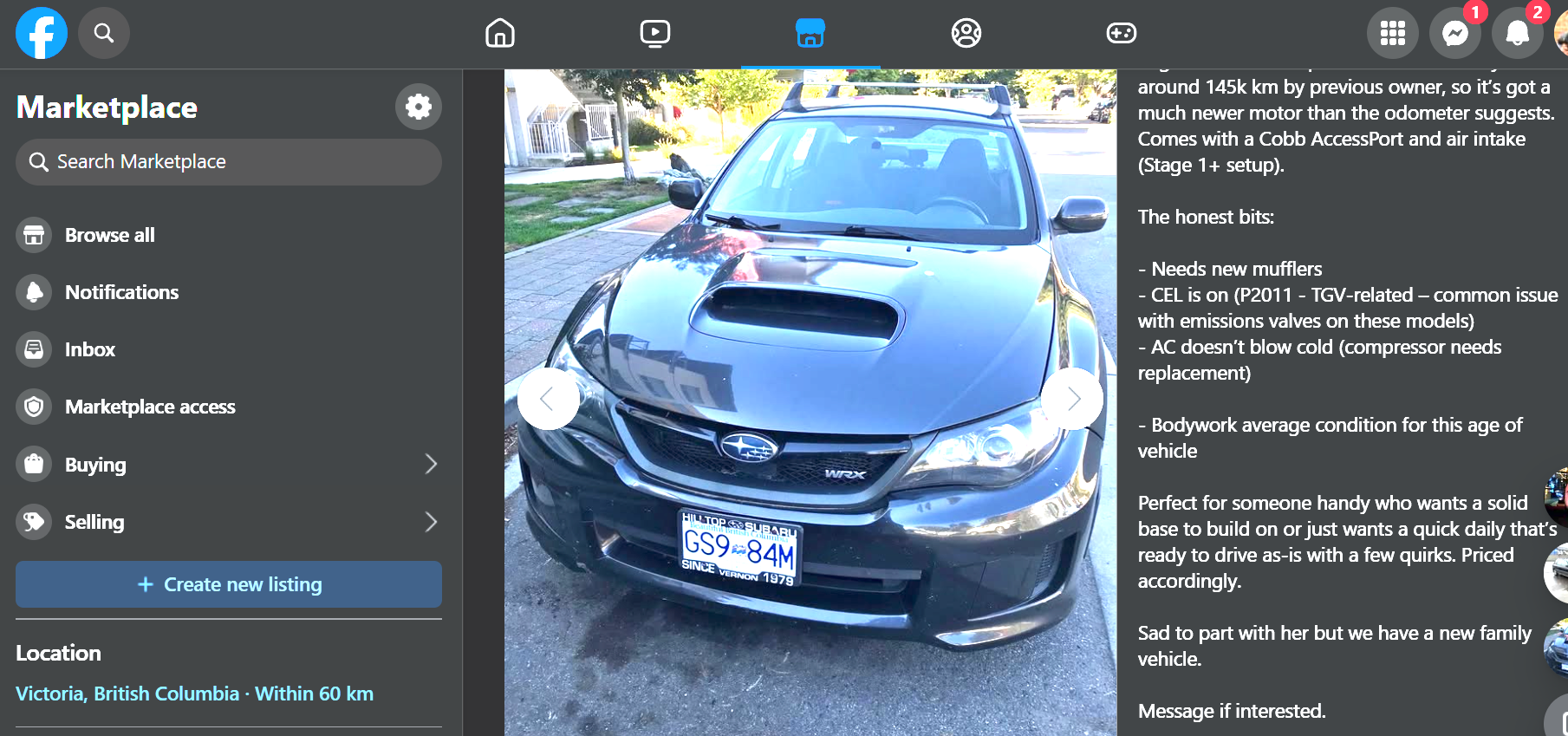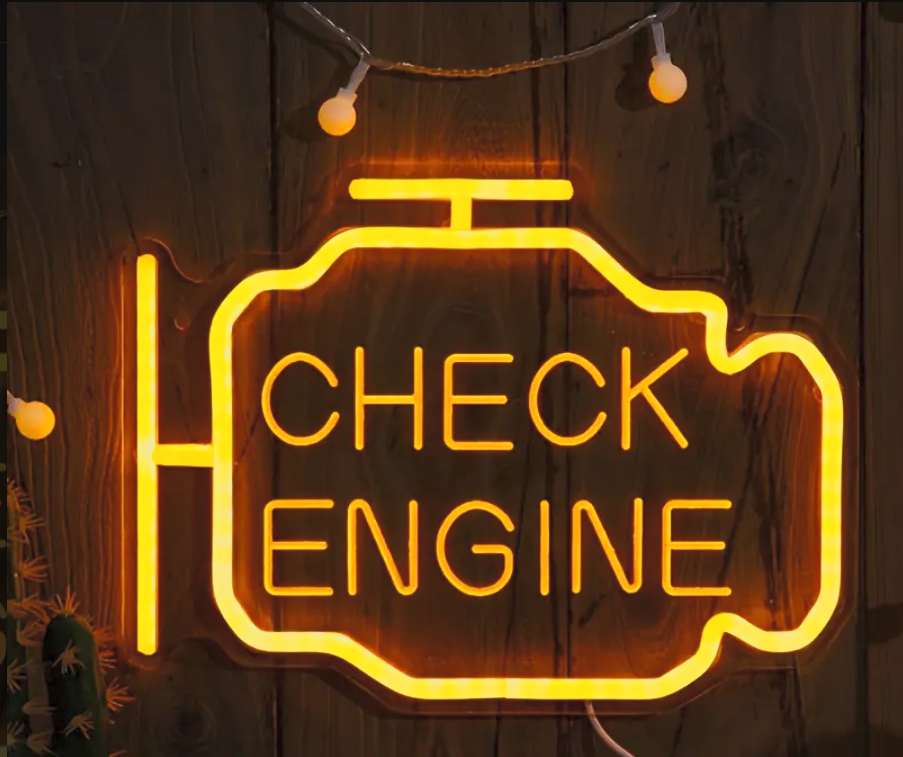Doubtlessly the universal yellow "check eng-" (I mean, as it is implied,) "CHECK ENGINE!!" light is the worst light, by most visual metrics, on any dashboard. It screams you are moments away from boiling your cylinders, cooking your gaskets, and throwing a rod through the hood. It doesn’t just evoke a passive, "I must remember to check the engine because I am qualified to discern its presence or absence under the hood." It’s a relentless, flashing reminder of potential catastrophe—an alarm that could mean anything from a minor glitch to a serious end-of-life issue.
This light is responsible for cars selling below market value. It holds the market share of questions—questions about its existence, its meaning, or why it can seem to flicker. I remember the original Marketplace ad for what would become my 2011 Subaru WRX. It stated, “The CEL is on. Error P2011. TGV-related, blah, blah... common problem.” I’d pretty much forgotten about it as I was reading, because I was already hooked. I was ready to overlook missing wheels and mirrors; I just wanted that car more than anything in my life. It was a palpable hunger, a yearning, and I thought the CEL (Check Engine Light), while extremely bright in the daylight, was something I was very familiar with. I never paid enough to eradicate this light in my 20+ cars, but I don’t recall it ever actually affecting me the way it suggests—like imminent disaster.
The truth: The Check Engine light is essentially a general warning that something isn’t right in the vehicle’s emissions system. That’s it. Usually, it’s a faulty sensor or a plugged catalytic converter—costing around $400 an attempt to fix. In my experience, replacing sensors was the usual modus operandi—but THIS light, all drivers fear, is an expensive but manageable fix.
In my province, we ran a destructive-to-my-personal-environment program called AIRCARE for over two decades. Every year, your vehicle had to be tested on a dynamometer—the only cool part of the process. The attendant would drive your car at fifty kilometers an hour while sitting still, on a machine that simulated driving. Once, I was allowed to do it myself because they couldn’t manage my dying clutch. No Ferrari owner ever drove their car on that test; only me and a clutch I wasn't going to invest in fixing if the car's emissions were going to fail. Duh. After the test, you’d get a printout with PASS or FAIL at the top. I failed so many cars, I was forced to buy another one—at least for a year until it was whisked off to a "better place." It might have been good for the climate, but more than that, it ripped 30 years of old cars off the road, never to be insured again. I really miss seeing Firebirds and Z-28s on the road but I'm guessing they were little Chinese-level polluters.
In a way, it pushed people into buying newer cars. And now, in direct consequence, a simple fender-bender that would have cost $100 damage thirty years ago can now easily run into thousands. The cost of repairs and insurance has ballooned, making minor accidents far more financially devastating than they once were.
The next time you are driving your new date home after a fabulous one-off five-star night and all of your stars are aligning—if the CHECK ENGINE light comes on, you can smile, and deal with it when China deals with their emissions problem. It is NOT a fatal engine warning. But it can certainly be fatal to a sale. The estimate for repairing the CEL P2011 TGV, blah, blah... is just over $1000. At this juncture, I'm fine getting a yellow suntan while driving in the dark. I may pull up to a light with a grumble, looking jaundiced as SpongeBob, but I can tear the doors off anything that moves, CEL-be damned.


